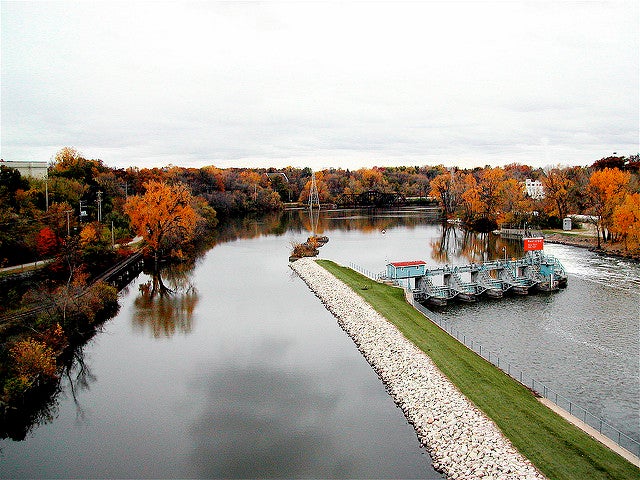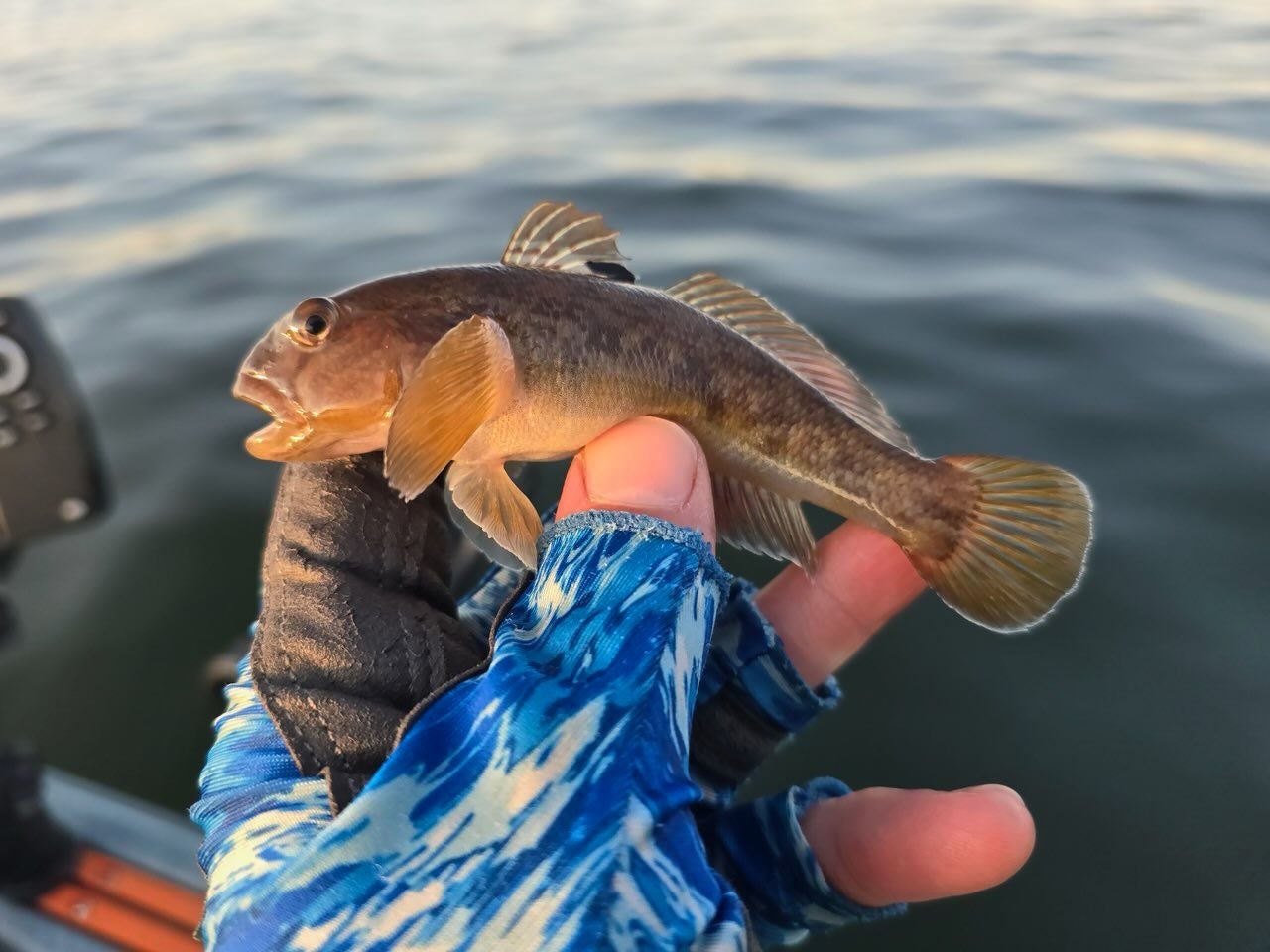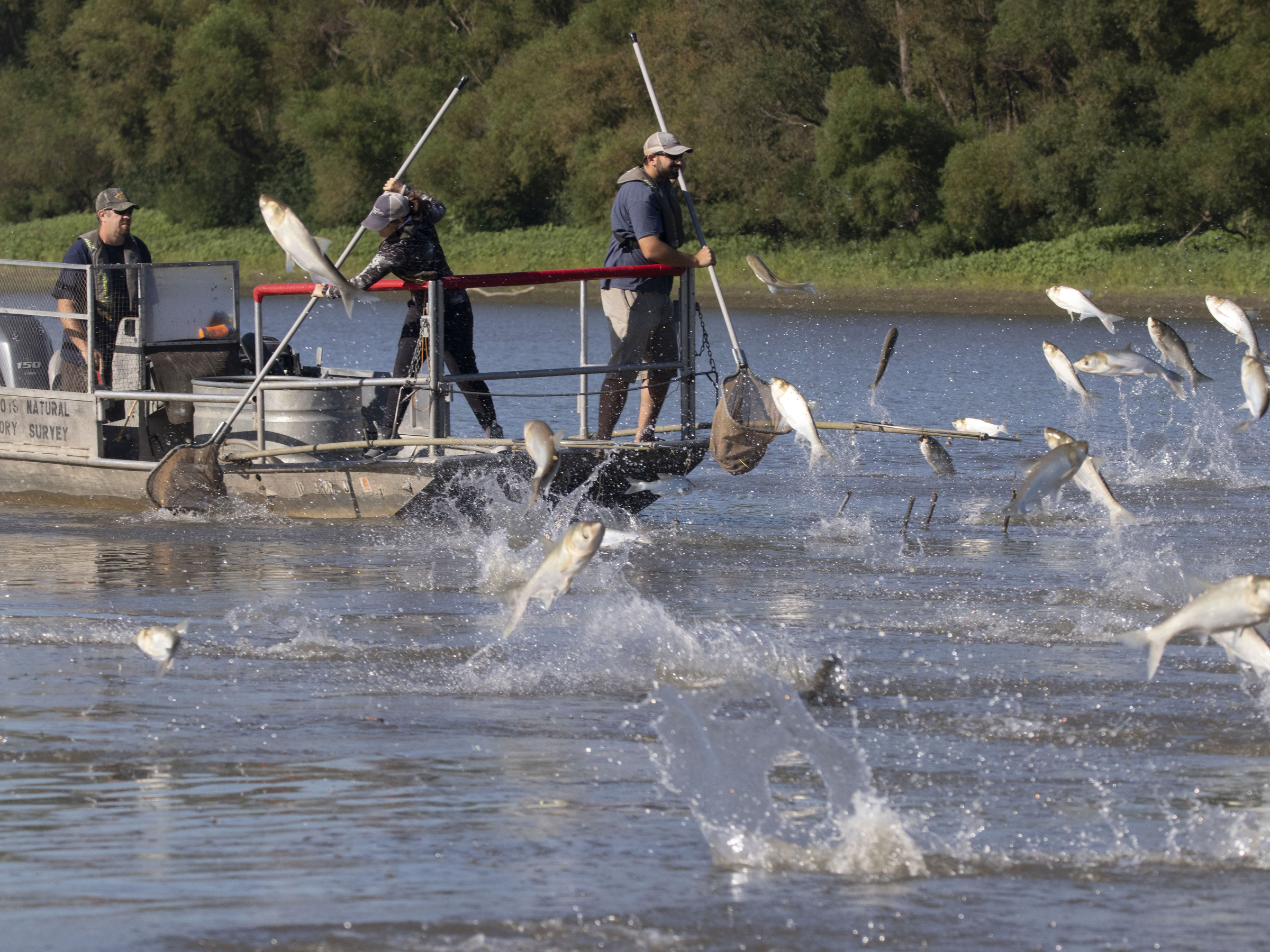The Fox River Locks system dates back to the 1850s and is thought to be one of Wisconsin’s first infrastructure projects.
The locks were created as a 19th century form of the modern interstate system, helping move goods from Wisconsin to the Great Lakes and beyond. The locks also gave residents and tourists access to the riverfront. But all of that economic boon may be in jeopardy because of a 6 and a half inch fish called the round goby.

Round goby. Kristen Stanford, Ohio Sea Grant (CC BY-NC)
News with a little more humanity
WPR’s “Wisconsin Today” newsletter keeps you connected to the state you love without feeling overwhelmed. No paywall. No agenda. No corporate filter.
There are 17 locks on Wisconsin’s Fox River between the Oshkosh area and Green Bay.
In 2015, the lock in Menasha was closed to keep the invasive round goby at bay and out of Lake Winnebago and the Wolf River watersheds. Another barrier at Rapide Croche will most likely be closed to help stop the spread of the fish. Tentative plans to keep the Rapide Croche open include building a boat transfer and washing station to ensure no gobies make it between locks.
While these measures help minimize the spread of the invasive species — that competes with native fresh water species for food — they may have a negative impact on economic development along the Fox River.
David Fuller, a University of Wisconsin-Oshkosh economics professor, crunched the numbers and found restorations of various locks between 2005 and 2015 created more than $64 million in economic development, while the restorations only cost $14.5 million.
In that time, he said, hotels, apartments and small shops sprung up along the Fox River.
“I’m not arguing the locks are the sole reason that happened,” Fuller said.
Instead, he thinks opening the locks may have played some role in bringing more people to the riverfront.
“The usability of the river and surrounding area, it is going to generate economic activity,” said Fuller. “That’s driving most of the results I’m getting.”
In his study, Fuller used what he called a “general infrastructure model” rather than direct-spending by recreational boaters.
If the Menahsa Lock were to reopen, Fuller says, the economic impact of the river system could be upwards of $210 million over the course of a decade, including the creation of 4,595 jobs.
But the round goby stands — or swims — in the way of that possibility.
The entire lock system could be reopened if not for the invasive round goby, said Tim Rose, chair of the Fox River Navigational System Authority.
For Rose, the set up of any plans going forward can play a role in keeping invasive species out of the region’s fresh water lakes and rivers.
“We want to make sure that whatever we do, to control the goby and to open the lock doesn’t affect the ecology of the Lake Winnebago and the Wolf River watershed,” said Rose.
Rose added that if the Menasha Lock is reopened, something must be done to stop invasives.
“If we’re spending substantial money to do it we want to make sure that we try to do something that won’t only deal with the goby, but might be a leg up on something else that might come down the river,” Rose.
Wisconsin Public Radio, © Copyright 2025, Board of Regents of the University of Wisconsin System and Wisconsin Educational Communications Board.






